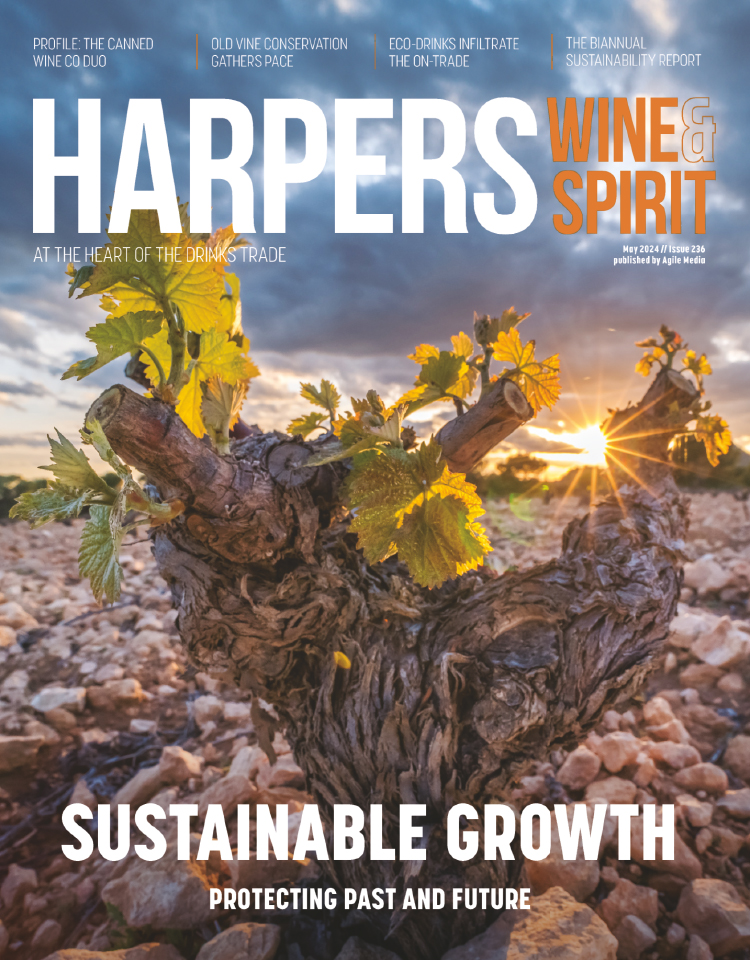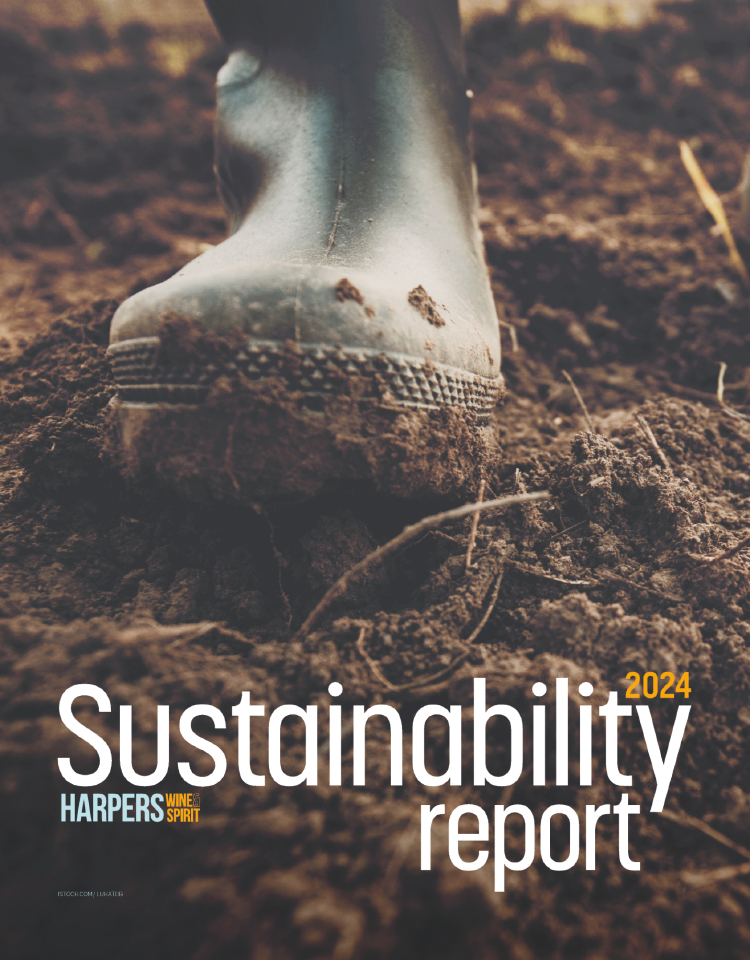
Washington post
America’s second-biggest wine-producing region is a hotbed of evolution and experimentation, with a pioneering spirit still shaping the state. Andrew Catchpole reports.
There’s no missing the big news out of Washington state, which has been rocked by the dramatic downsizing plans of its biggest producer, Saint Michelle Wine Estates (SMWE). Accounting for more than 50% of production in the US’ second-biggest wine-producing state, the company is cutting its grape contracts with local growers by 40% over the next three years. This is set against an ongoing growth in vineyard plantings, many of which will now be fighting ever harder to find a home for their grapes, with many surely falling by the wayside.
However, as can often be the longer-term case with such painful resets, this could play a part in helping propel Washington’s growing image as an innovative and evolving source of smaller-scale, refreshingly diverse wines. Not all fruit is equal, of course, with, say, Cabernet Sauvignon in Red Mountain AVA or Syrah in Walla Walla AVA – not to mention a host of newer and more experimental varieties that have been going into sought-after soils – commanding a premium for the character delivered in the bottle.
It’s reasonable to say that a significant amount of SMWE’s requirements are and were aimed at a different market and price level. And any subsequent (cheap) surplus volume production elsewhere will inhabit a very separate space from that more artisanal-scale scene that is coming to define the state. Moreover, those smaller winery numbers are still growing, up from just 10 in 1970 to more than 1,100 today.
Thus, while volume hits the headlines, an equally arresting figure – and one that perhaps better helps understanding of the heart of modern Washington wines – is that the number of varieties planted has doubled in just five years.
Mediterranean grapes are on the up, with the more established southern French cultivars being joined by a trickle of Italian, Spanish and even Greek varieties. And this, in turn, is helping drive interest, not least among sommeliers and indie merchants, many of whom are already on nodding terms with the more established high points of Washington’s quite contrasting flagship AVAs mentioned previously.
Meanwhile, the state’s industry has been increasingly keen to focus on this quality and diversity of its producers, with export markets – and especially the UK – very firmly in its sights. However – and by the Washington Wine Commission’s own admission – one of the biggest challenges is to coalesce a unifying message upon which to educate around and sell Washington.
“We are the land where anything is possible,” the Commission’s Chris Stone told Harpers on a recent visit.
“But that doesn’t make it easy to communicate Washington with one simple message.”
Even the better-known AVAs are still being crystallised, with other regions such as Mill Creek (in Walla Walla), likely to be granted AVA status soon. And those presumed established, such as Walla Walla, continue to evolve at breakneck pace (at least by normal wine country standards). Compared with California, its giant rival to the south, the sense of a youthfulness and experimentation is still very much in evidence across Washington state.
↓
Early pioneers
James and Poppie Mantone at Syncline Winery in the Columbia Gorge AVA tell a fairly typical story of the ‘how and why’ they landed upon Washington soils, being one of the earliest pioneers of their region. Arriving to make wine in 1999, first from purchased Pinot Noir, they gradually planted and bought vineyards, folding in more appropriate Syrah and Grenache. Then, more latterly, they’ve worked with growers to plant and produce Mourvèdre, Cinsault and Carignan, now with Picpoul, Grüner Veltliner, Viognier, Gamay Noir and even Mondeuse also in the mix.
“We wanted to come and play around with a new region… the topography is pretty intense, the aspects and elevations change for the vines, they are pretty intimate vineyards [and] the thing about this area is that the wines should reflect the wildness.”
That wildness includes wolves, bears, cougars, mountain lions and eagles, all adding to the sense that this is remote and sometimes extreme winemaking territory, even in the Columbia River Valley. Further east, into the dry stretches of one of America’s most arid landscapes, Chris Figgins of Leonetti Cellar family fame is just finishing a new winery for his own Figgins label high in the folding hills of Walla Walla’s Mill Creek region.
The build sits among vines at 1,600ft, with Figgins saying he wants to push the vineyard plantings up to 2,000ft above sea level, with “higher elevations and cooler plantings being very much a trend in Walla Walla”.
As is the contrasting way with Washington, a superb Riesling sits cheek by jowl with intense, aromatic Bordeaux varietal blends in the as-yet windowless tasting room. Asked as to how best define the character of Washington in an easy-to-digest line or two, Figgins agrees that it is a challenge.
“As a whole, it’s easier to wrap your head around Washington first, because even the regions can be difficult to define; even in Walla Walla there is so much diversity,” he says.
“It’s more about letting people know that if you find a wine from Washington, it’ll be great value, and then ask, ‘Are you a Rhône variety fan, are you a Bordeaux variety fan?’, because there is a little something for everyone here.”
This fluidity, adds Figgins, feeds into the pull of Washington for younger winemakers over somewhere like Napa, with cheaper land and a less established scene meaning that, within reason, anything goes, even in an increasingly celebrated region such as Walla Walla.
Grosgrain, where Matt and Kelly Austin set up shop in 2017 having ditched LA careers as an attorney and a fashion designer, respectively, is typical of many incomers here. The pair eschewed California for the pioneering scene in Washington when they made the dramatic change to their lives. Lower costs helped edge that decision along too, but it was the possibility to be part of a “new wave” of winemaking, similar to the already established ‘New Cali’ movement, that appealed.
Matt says: “We saw a lot of opportunity here with the growth in the industry and we wanted to do something different, to take a pan-Mediterranean approach to what we are planting here.
“Rhône varieties have the most momentum, but there’s also potential for some Italian varieties – we have Nebbiolo and Aglianico on this property.”
In fact, spread between Grosgrain’s two Walla Walla vineyard sites, there are some 16 varieties, including “Rhône and Rhône-adjacent” vines, plus the likes of Semillon and Albariño, along with experimental quantities of varieties such as Macabeo and Xar.relo.
↓
Educating folks
In Walla Walla, especially, where the five wineries of 1999 have become 150+ today, the list of variety tasted can run and run. Reynvaan, up against the Blue Mountains in the far south-eastern corner of the AVA, is another good example. Here excellent Syrah and Syrah-based wines from the contrasting The Rocks and The Foothills vineyards reveal very distinct terroirs, with the basket-pressed, wild-ferment philosophy employed also extending to remarkably well-crafted Grenache Blanc and Marsanne.
Second-generation winemaker Mike Reynvaan quips that “the problem with Washington is that you can plant what the fuck you want”, but adds, “we want folks to be educated as to what is possible from a small estate in Washington”. That Reynvaan’s wines are in high demand, including overseas, is testimony to the success of that vision.
Some of those ‘folks’ Reynvaan mentions are, increasingly, winemakers and producers already established in other regions. Big Napa names such as Duckhorn and Cakebread, and more latterly Jackson Family Estates (which has just invested in a sizeable plot of land), have moved in.
Another notable recent foreign investor is Rioja stalwart Valdemar, which completed a very swish winery here in 2019. Having first considered Ribera del Duero, the family’s fifth generation instead decided that it would be a far more exciting addition to their portfolio to produce west coast wines, and chose Washington as the place to do just that, adding to the outside interest being generated by newcomers.
Over in Red Mountain, which even more than Walla Walla and its dominant Syrah has become associated with one variety – Cabernet and Cabernet blends – in terms of carving out a quality profile, there is still a sense of evolution and progression.
Here, in this compact hilltop AVA, where Tuscan producer Antinori famously has a winemaking partnership in the form of Col Solare, Chris Upchurch of Upchurch
Vineyard is a star of the region. But even having just landed 100 Parker points for his Hero Twins (of which he makes around two barrels), he describes the AVA as still very much a work in progress.
“You have the best Cabernet in Washington state here – others may tell you differently, but they are wrong,” he smiles.
However, Upchurch more modestly adds: “We are a young region and sometimes we have to wait for the next generation to do something special, but it will get there… we are still experimenting, still raising the bar.”
‘Still raising the bar’ might be a great phrase for Washington as a whole, not least when expressed by a wild-haired chap in a Seattle Sounders soccer shirt who has just bagged a perfect wine score. And that is also reflected in an amazing flight of wines tasted at his unflashy cellar door.
Good and great though many of the wines already are across this state, there’s a real sense that it’s still very much an exciting work in progress, with winemakers still striving and even better wines yet to come.
“What makes a good wine? It has to be delicious,” says Upchurch. And that, perhaps, is the best word to describe a growing medley of styles at the forefront of Washington’s dynamic winemaking scene.








